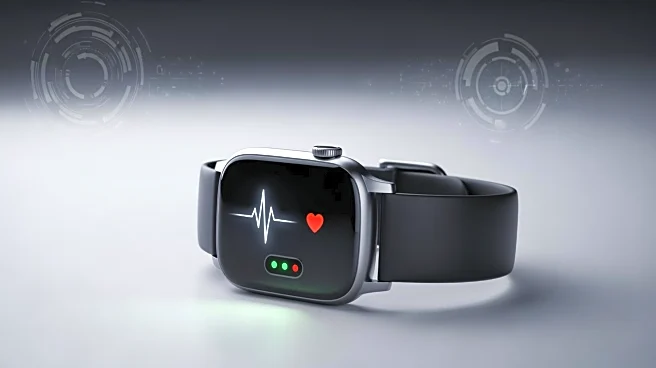What's Happening?
A study utilizing machine learning has successfully predicted dropout rates in home blood pressure monitoring with high accuracy. The research analyzed data from approximately 300,000 users, achieving
AUC values of 0.930 and 0.851 for predicting dropout at 28 and 56 days, respectively. The study found that fewer measurement days, shorter duration from initial measurement, and extreme systolic blood pressure values increased dropout risk. The model demonstrated robustness across different intervention periods, suggesting its universal applicability. The findings highlight the potential of machine learning in enhancing patient adherence to home monitoring, which is crucial for effective hypertension management.
Why It's Important?
Predicting dropout in home blood pressure monitoring is vital for improving patient adherence and health outcomes. By identifying users at risk of discontinuing monitoring, healthcare providers can implement timely interventions to maintain engagement. This approach can lead to better blood pressure control and reduce the risk of complications associated with hypertension. The study's insights could inform the development of personalized intervention strategies, enhancing the effectiveness of digital health services.
What's Next?
Future research may focus on optimizing intervention methods based on predictive models and exploring their effectiveness in real-world settings. Additionally, expanding the model's application to other health monitoring areas, such as weight and glucose tracking, could further improve patient adherence and health management.
Beyond the Headlines
The study raises questions about the psychological factors influencing patient adherence and the role of technology in healthcare. Understanding these dynamics could lead to more comprehensive strategies for patient engagement and support.













